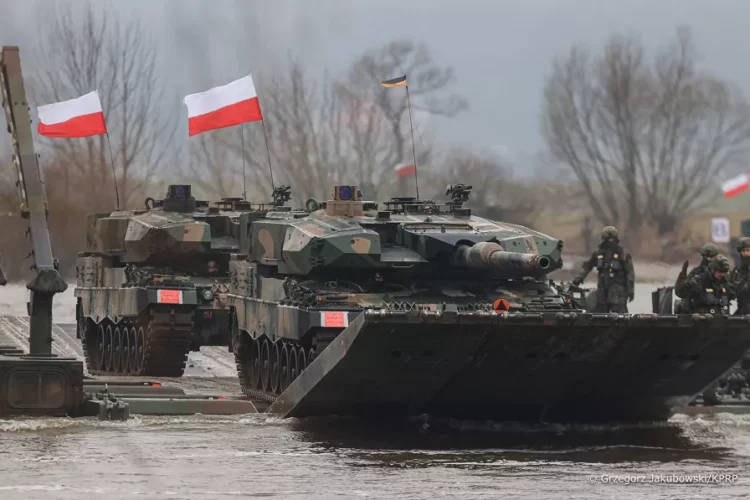Poland’s military has been recognized as the third largest within NATO, trailing only behind the United States and Turkey, according to a recent NATO report covering the years 2014 to 2024. Jacek Siewiera, head of the National Security Bureau (BBN), announced this significant achievement, highlighting the substantial growth and strategic investments made by Poland over the past decade.
“NATO’s data, even with estimates for 2023 and 2024, confirm that Poland now holds the position of the largest army in Europe, which significantly reduces the likelihood of conflict,” Siewiera stated. The NATO report places Poland’s military size at 216,100 personnel, a notable figure compared to France’s 205,700 and Germany’s 185,600. This achievement underscores Poland’s commitment to national and regional security, reflecting its robust defense strategies and expenditure.
Strategic Investments in Defense
Poland’s rise in the NATO rankings is attributed to its consistent and strategic investments in defense. The NATO report highlights Poland’s significant financial commitments, with the country spending 5% of GDP on defense, well above the alliance’s recommended 2% of GDP on defense. This includes substantial allocations for acquiring new military equipment and enhancing operational capabilities. In fact, Poland dedicates an estimated 51.1% of its defense budget to equipment procurement, far exceeding NATO’s 20% benchmark.
Countries like the United States and those situated near Russia and Ukraine, including Estonia and Latvia, also show high defense spending. These investments are seen as essential in bolstering NATO’s eastern flank and deterring potential aggressors.
Comparative Military Strengths
The United States maintains the largest army within NATO, with a current force of 1.3 million soldiers. Turkey follows with 481,000 military personnel. Poland’s position as third is particularly significant given the broader European context. The report indicates that other major European military forces include Italy with 171,400 soldiers and the United Kingdom with 138,100 soldiers. Spain and Greece also feature prominently, each with forces exceeding 100,000 personnel.
This strategic positioning by Poland aligns with broader NATO objectives, ensuring that the alliance remains capable and ready to respond to any threats. The substantial growth in Poland’s military capabilities is a testament to the country’s dedication to both its own security and that of its allies.
NATO Spending Compliance
The NATO report also scrutinizes member countries’ compliance with defense spending guidelines. Notably, 23 out of 32 NATO members meet the required spending threshold, with Poland, Estonia, and Latvia leading the charge. However, some countries, including Canada and Belgium, fall short of the 2% GDP spending target. This discrepancy highlights ongoing challenges within the alliance regarding equitable burden-sharing and collective defense responsibilities.
As Poland continues to invest in its military, the country’s strategic importance within NATO is set to grow. Siewiera’s announcement emphasizes not just Poland’s current achievements, but also its future role in regional stability and security. By maintaining a robust military presence, Poland aims to deter potential conflicts and contribute to a more secure Europe.
Historical Context
Poland’s military development over the past decade reflects a broader trend of increasing defense readiness among NATO countries, particularly those near Russia. The annexation of Crimea in 2014 and subsequent conflicts in Eastern Europe have underscored the need for heightened defense capabilities. Poland’s proactive stance and significant investments are a direct response to these geopolitical challenges, ensuring that the country remains a pivotal player in NATO’s strategic landscape.
As Poland celebrates this milestone, it remains committed to strengthening its military and contributing to NATO’s collective security efforts. The recognition of Poland’s army as the third largest in NATO is not only a point of national pride but also a critical component of the alliance’s overall defense strategy.


















